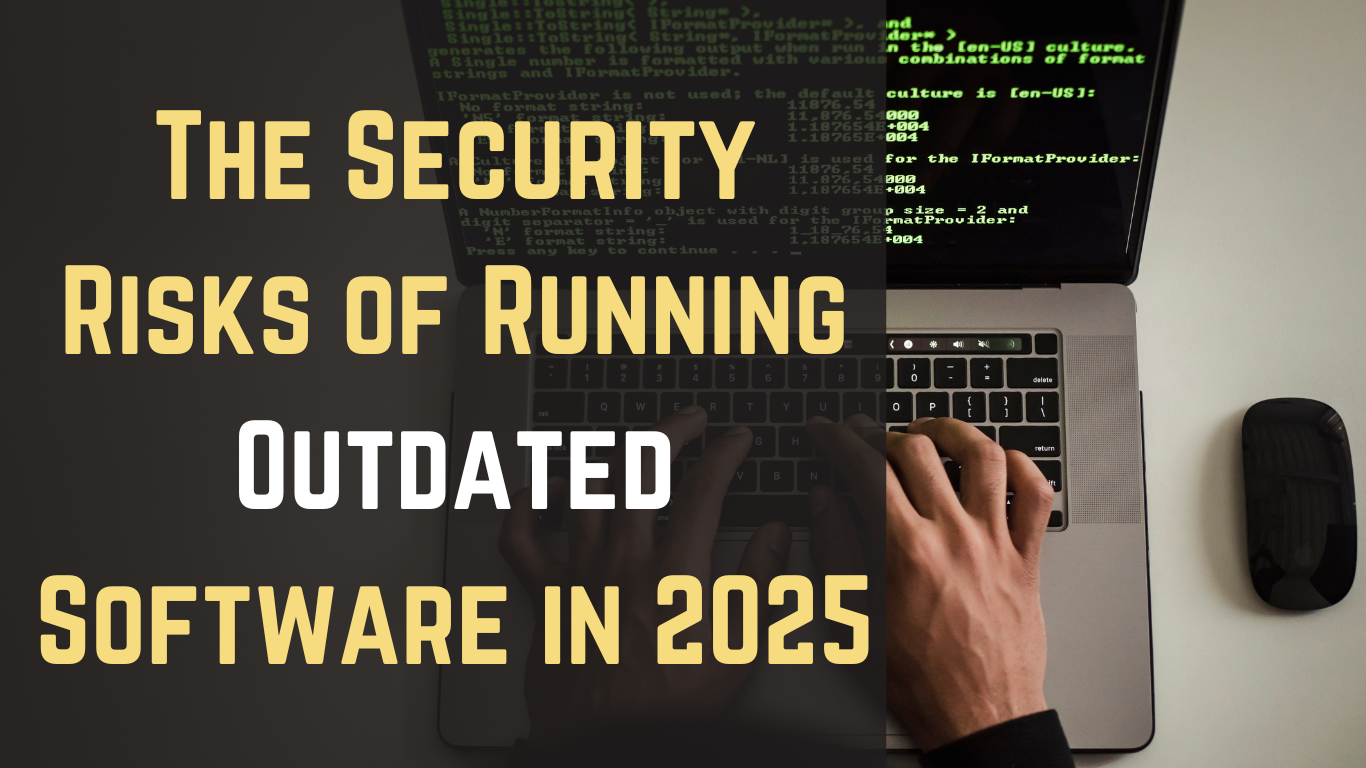The Security Risks of Running Outdated Software in 2025
Published in Business by EA Target ICT
Many businesses cling to old software because “it still works,” but in 2025, running outdated software isn’t just inefficient it’s one of the biggest security threats your company faces. Hackers constantly exploit vulnerabilities in unsupported programs, and with cyberattacks becoming more sophisticated, using obsolete systems is like leaving your front door unlocked in a high-crime neighbourhood.
The risks go beyond just viruses. Outdated software can lead to data breaches, compliance fines, and even complete business shutdowns. For example, companies still using Windows 7 (which no longer receives security updates) are three times more likely to suffer ransomware attacks than those on supported systems.
In this guide, we’ll explore exactly why running outdated software in 2025 is so dangerous, the hidden costs most businesses overlook, and practical steps to secure your systems without breaking the bank.
Why Outdated Software Is a Hacker’s Dream
Cybercriminals don’t invent new hacking techniques for every attack they exploit known weaknesses in old software that developers have already patched in newer versions. When you run outdated programs, you’re essentially using a system filled with unlocked backdoors that hackers can walk through at will.
A common misconception is that only large corporations get targeted. In reality, 43% of cyberattacks specifically target small businesses, precisely because they’re more likely to use unsupported software with well-documented vulnerabilities. The WannaCry ransomware attack, which crippled the NHS in 2017, spread through an exploit in outdated Windows systems a flaw that had been patched months earlier in updated versions.
Modern malware doesn’t just steal data it can encrypt your entire system until you pay a ransom, or secretly use your computers to mine cryptocurrency while slowing performance to a crawl. Security firm Sophos found that the average ransomware payment exceeded £150,000 in 2024, not including the costs of downtime and reputational damage.
The Hidden Business Costs of Obsolete Systems
Beyond direct security breaches, running outdated software creates several less obvious but equally serious problems:
Compliance violations are increasingly common as data protection laws evolve. The GDPR mandates that businesses implement “appropriate technical measures” to protect data a requirement you automatically fail by using unsupported software. Fines can reach 4% of global revenue, and insurers often refuse to pay out if they find neglected updates contributed to a breach.
Productivity drains occur as old software struggles with modern file formats and web technologies. Employees waste hours dealing with crashes, compatibility issues, and workarounds for features that current versions handle seamlessly. Research shows workers using outdated systems are 27% less productive than those with modern tools.
Integration nightmares emerge when old software can’t communicate with newer business systems. This forces expensive custom solutions or manual data entry that introduces errors. As one accounting firm discovered, their 2015-era tax software’s inability to connect with modern banking APIs created 80 extra work hours per quarter in reconciliation.
How to Secure Your Business Without Starting Over
Completely replacing old systems isn’t always feasible, but these strategies significantly reduce risk:
Prioritise updates for internet-facing systems first especially web browsers, email clients, and any software handling customer data. These are hackers’ primary entry points. Enabling automatic updates ensures you don’t miss critical patches, a simple step that blocks 85% of common attacks.
Virtualise legacy applications if you must keep them. Tools like VMware or Parallels allow running old software in isolated containers with modern security layers. This approach helped a manufacturing company continue using a 2008 inventory system while protecting their network from its vulnerabilities.
Implement application whitelisting, which only allows approved programs to run. This prevents malware from executing even if it infiltrates your network through an outdated app. Microsoft’s AppLocker provides this functionality built into professional Windows versions.
When to Seek Professional Help
Some warning signs indicate your outdated software risks require expert intervention:
- Multiple failed update attempts suggest deeper compatibility issues
- Industry-specific software with no modern alternatives may need custom securing
- Regulated industries (healthcare, finance) often require certified solutions
For businesses in this position, managed IT services like those we offer at TargetICT can bridge the gap between legacy systems and modern security needs. Our approach involves creating a custom migration roadmap that balances functionality, security, and budget realities.
Taking Action Against Obsolescence
The first step is auditing your software landscape. Free tools like Belarc Advisor generate detailed reports showing exactly which programs need updates or replacement. From there, focus on:
- Critical security updates for operating systems and firewalls
- Phasing out abandoned software that developers no longer support
- Training staff to recognise social engineering attacks that target old systems
Remember every day you continue running outdated software, you’re gambling with your business’s future. As one retailer learned after a breach erased their customer database, the £8,000 they “saved” by delaying upgrades cost them £92,000 in recovery and lost sales.
Visit TargetICT.co.uk for more

